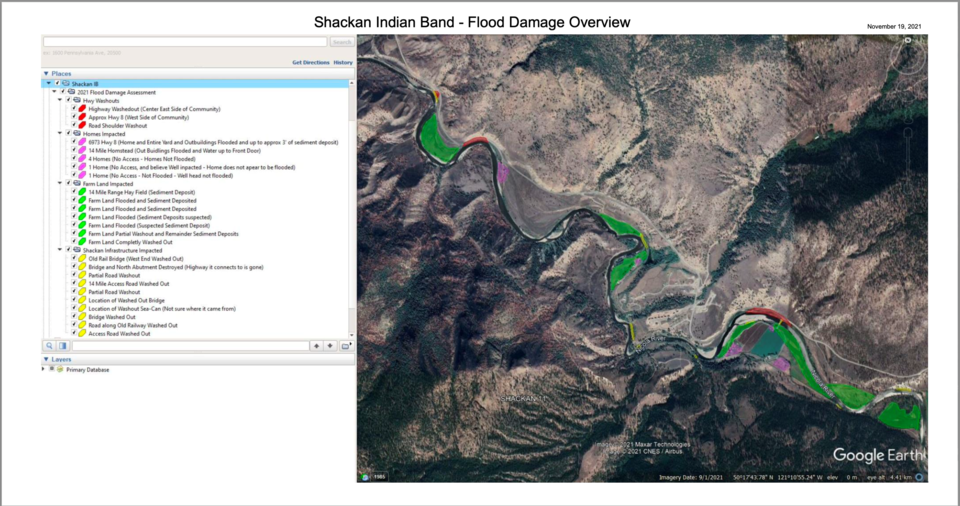Shackan First Nation is surveying the damage to their community after the Nicola River swallowed land, bridges, large chunks of highway and important cultural history.
Chief Arnold Lampreau says raging floodwaters destroyed much of their land and infrastructure located off Highway 8.
"All of the fields that were there are gone, they’re washed away," he says. "There’s nothing but rocks there now."
The First Nation has hired Urban Systems, a Kamloops-based company, to document the damage with a drone.
"[It] gives us a chance to look at what land loss is, infrastructure loss," says Lampreau.
The Chief says the band is considering relocating; however, no official decisions have been made.
He tells Glacier Media Shackan First Nation has been approved for financial support from Indigenous Services Canada to hire engineers and hydrologists. The financial support will also help the members who are now living across B.C.
B.C.’s Minister of Indigenous Relations and Reconciliation has contacted Lampreau and provided financial support, as well.
"The main priority was getting the people out and getting them safe,” he says of the band evacuating on Nov. 15.
Lampreau questions how people are going to make a living, now that their livelihoods have been literally swept away.
"The river has changed its course in a lot of different places, that meaning of life is not there,” he says, noting houses were mostly built on higher land. The structures remain, albeit damaged.
Sadly, Lampreau tells Glacier Media his small community of just under 50 people won’t be able to return home for quite some time.
“It's important to our community, moving back home, or moving forward after all this happened, or seeing what’s left after the spring freshet... I want to keep everyone out until that happens.”
The nearest city is 40 kilometres away. Lampreau says people live off the land and their history is tied to it.
"We have our people that are buried there, our graveyards are there, and that’s where some of our people want to come back to,” he says. “The oral stories themselves come right from that geographical area.”
No chance to breathe
This isn't the first time Shackan First Nation was forced to flee. Band members were evacuated during this summer's aggressive wildfire season.
Meanwhile, many of the members don't have cellphones and rely on a landline, so Lampreau is working to transfer those numbers to cellphones.
"In the last two years, we really haven’t had a chance to breathe,” he says. “It seems like we had just got home from the fires and now we are back out.”
Other First Nation Chiefs from across the Nicola Valley are meeting together to plan their next steps and support each other. The Shackan Indian Band is one of five bands in the Nicola Valley who comprise the Scw'exmx and total to more than 3,000 people.
“We really can’t put them back on the low-lying areas where they are going to be flooded out again,” Lampreau says.
During a press conference on Thursday, Minister of Transportation and Infrastructure Rob Fleming said there is no timeline for when Highway 8 will be fixed.
“We are working on an interim solution and we don’t have a timeline just yet on when that will be restored. We are communicating with Shackan and other communities on the Highway 8 route,” says Fleming.
Ministry of Transportation regional executive director Paula Cousins says they’re working "closely" with the Shackan First Nation to see if they can get temporary access.
“We are exploring all options,” she says.



